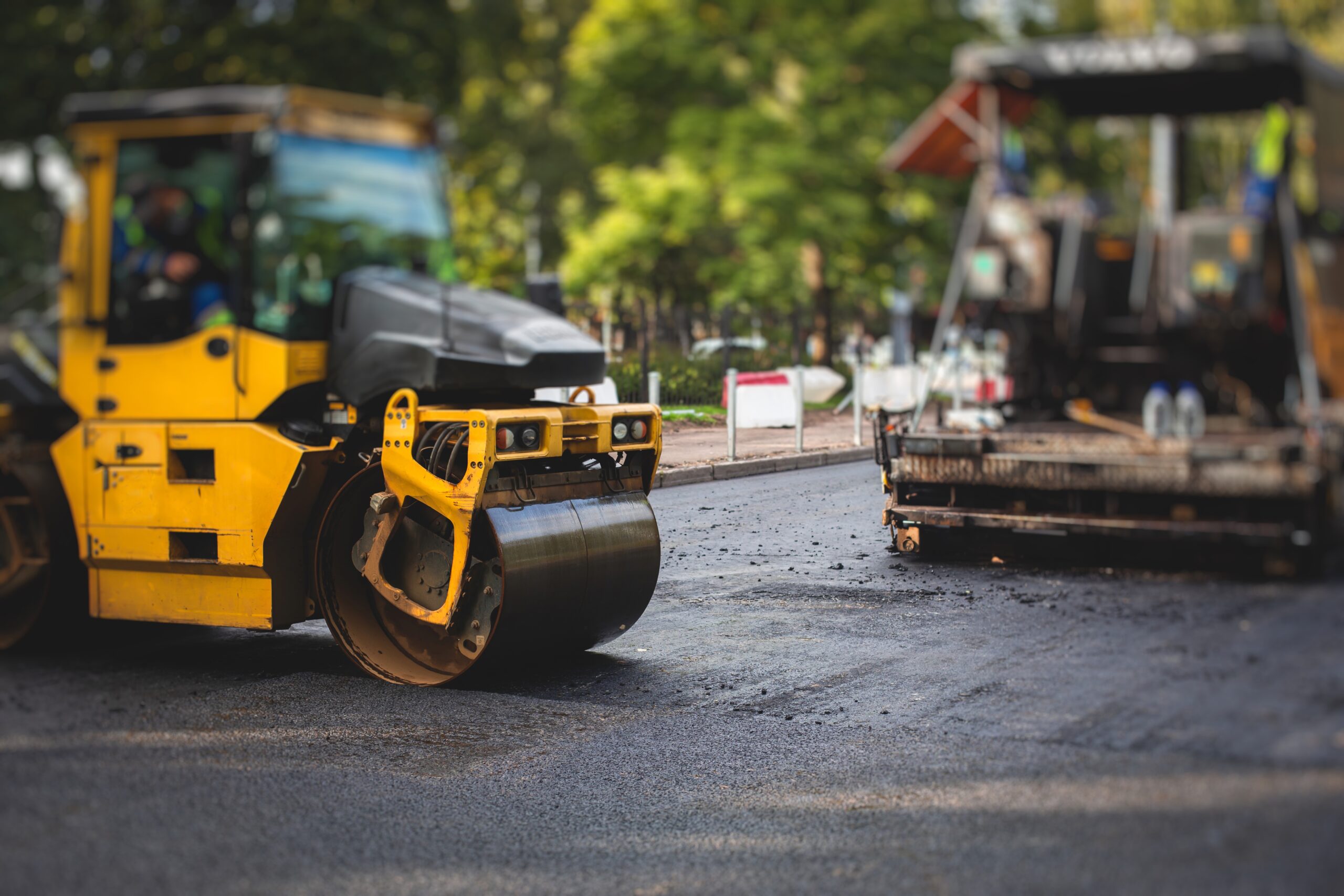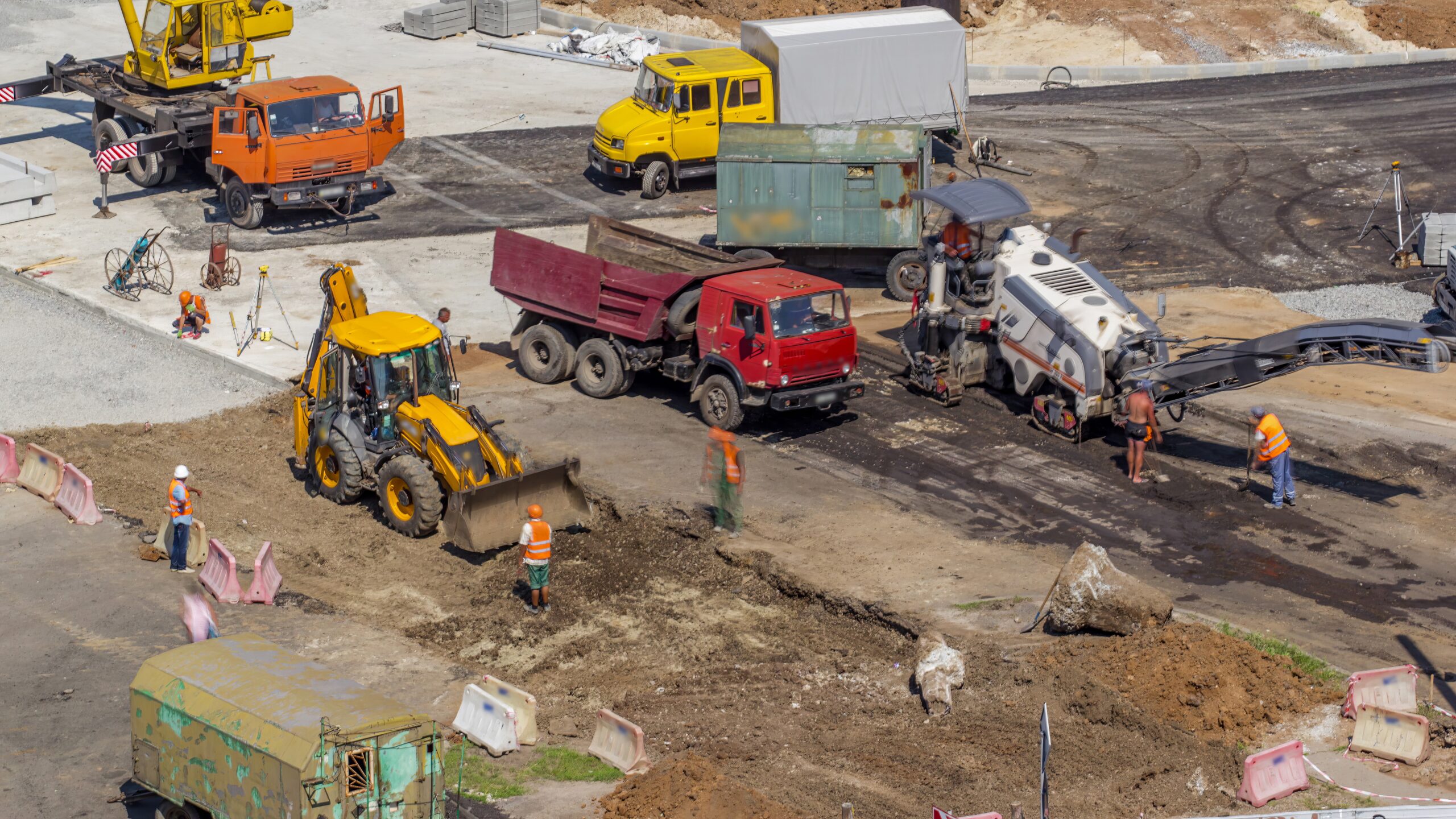
Asphalt surfaces don’t last forever. Over time, weather, traffic, and heavy loads wear them down. Cracks appear, potholes form, and the smooth blacktop turns grey and brittle. When these signs show up, property owners are faced with a crucial decision.
Choosing between an overlay and a full replacement isn’t always straightforward. Each option has a purpose. One is cost-effective and faster. The other is more durable and long-lasting. To make the right choice, you must understand what each method involves, when it’s appropriate, and how it impacts your long-term investment.
This blog will guide you through determining when to choose an overlay and when replacement is the best option. You’ll learn to recognise signs, evaluate surface conditions, and make decisions that save money while protecting your asphalt pavement.
Asphalt Overlay: Cost-Effective Resurfacing
An asphalt overlay is the process of applying a new layer of asphalt over an existing surface. This fresh layer is typically 1.5 to 2 inches thick and is laid directly over the current pavement. It’s a popular maintenance strategy because it’s quicker and less expensive than tearing everything out and starting from scratch.
Overlaying is suitable when the pavement’s foundation is still strong. It corrects surface damage and improves the appearance and ride quality.
When Is Overlay the Right Choice?
If you’re seeing general wear and tear, but no structural issues, overlaying is often the right path. Here’s when an overlay is typically recommended:
- Minor surface cracking: Small, shallow cracks that haven’t penetrated deeply.
- Slight depressions or ruts: Can be evened out with proper levelling.
- Good subbase condition: The base layer beneath the asphalt remains stable and undamaged.
- Limited water damage: The drainage system is still functioning correctly, and the water hasn’t caused widespread deterioration.
Benefits of Asphalt Overlay
Overlaying isn’t just about saving money. It also has some practical long-term advantages:
- Faster project timeline: Most overlays can be completed within a few days.
- Lower cost per square foot: Especially compared to full-depth removal and replacement.
- Improves aesthetics: Gives your lot or roadway a clean, dark, professional look.
- Minimal disruption: Business or traffic flow can resume quickly.
When Not to Overlay
Overlaying won’t solve structural failures. If you apply a new layer over a failing base, you’re only masking the problem. The new surface may look good at first, but issues will reappear quickly. In such cases, replacement is the more sensible option.
Let’s now take a closer look at when complete replacement is necessary.
When Replacement Becomes Necessary
Overlay works well for surface-level issues. However, when the damage is more severe, it’s time to consider a full replacement.
Addressing Deeper Structural Problems
Asphalt replacement involves removing the entire top layer, and sometimes the base layer, and then rebuilding it from scratch. This is the most comprehensive and long-lasting solution. It’s not cheap, and it takes more time, but it’s essential when the surface is beyond repair.
Replacement becomes necessary when surface and sub-surface damage are too severe for an overlay to correct.
Signs You Need a Full Replacement
Certain conditions cannot be resolved with an overlay. If you notice the following issues, it’s time to consider full-depth replacement:
- Widespread alligator cracking: This looks like the skin of a reptile and indicates base failure.
- Major potholes and sunken areas: These suggest deeper foundational issues that require full excavation.
- Drainage problems: Standing water or poor slope may need regrading during reconstruction.
- Repeated repairs and overlays: If your surface has already been overlaid one or more times, adding another layer may exceed legal or structural thickness limits.
- Subbase erosion: If the soil or aggregate beneath the asphalt is shifting or soft, it must be rebuilt.
Benefits of Full Replacement
Though it’s more involved, replacing your asphalt comes with long-term advantages:
- Strong foundation: You eliminate the hidden weaknesses below the surface.
- Longer lifespan: A new pavement can last 15–25 years with proper care.
- Better drainage design: Helps prevent future cracking, heaving, and pooling.
- Fewer future repairs: A fresh install reduces the need for costly maintenance over time.
Scenarios That Demand Full Replacement
Some properties simply cannot rely on overlays:
- Heavily trafficked areas: Industrial lots, trucking lanes, or high-volume driveways.
- Older surfaces (20+ years): These often have compromised foundations.
- Damage from tree roots: Replacement allows you to address root systems and prevent reoccurrence.
Choosing a replacement is not about spending more money; it’s about preventing bigger problems that could cost more in the long run.
How to Evaluate Asphalt Condition
Before choosing between overlay and replacement, it’s essential to assess the current condition of your asphalt surface.
Inspect First Before Deciding
Before committing to either overlay or replacement, a proper evaluation is essential. Surface damage can appear worse than it is or conceal more serious issues underneath. Here’s how to inspect effectively:
Start With a Visual Assessment
Walk the entire area and take notes. Look for:
- Crack types and patterns
- Surface colour and texture
- Drainage flow after rain
- Pothole size and location
Perform a Core Sample Test
This involves drilling into the pavement and checking the condition of each layer. It’s the best way to understand what’s happening beneath the surface.
Review Pavement History
Ask yourself:
- When was the surface last paved?
- Has it been overlaid before?
- How often has it been sealed or repaired?
Knowing this history can guide you to the correct solution.
Consult a Professional Contractor
An experienced asphalt contractor will assess not just the top layer but the entire pavement structure. They can help you balance cost with durability and ensure you meet local codes.
Cost Comparison and Time Considerations
Whether you’re leaning toward an overlay or considering complete replacement, understanding the cost and time involved is essential for making a wise, long-term decision.
Weighing Short-Term and Long-Term Value
Many property owners naturally opt for the less expensive option. However, choosing the cheaper path now can lead to higher costs later. Let’s compare the cost, time, and lifespan of each paving strategy to guide your decision.
Overlay Cost Factors
- Initial cost: Typically around $1.25 to $2.00 per square foot for large parking lot overlays and $2 to $5 per square foot for driveways.
- Typical installed resurfacing cost: Ranges from $3 to $7 per square foot.
- Timeline: A 1.5–2″ overlay generally takes 1 to 3 days.
- Ideal for: Surfaces with a sound base and only minor cracking or wear.
Replacement Cost Factors
- Initial cost: $4 to $10 per square foot for full replacement of driveways.
- Installed total cost: Typically $7 to $13 per square foot, including materials and labour.
- Timeline: Expect 5-10 days, depending on the complexity of the excavation and site.
- Ideal for: Pavements with structural failures, drainage issues, or extensive prior overlays.
Lifespan and Value Over Time
- Overlay lifespan: Generally extends pavement life by 8–12 years, depending on the level of maintenance.
- Replacement lifespan: A properly rebuilt pavement can last 20–30 years.
Time Is Also Money
Overlay projects minimise downtime and disruption, especially for commercial properties. However, complete replacement lowers the need for frequent asphalt repairs and future overlays. When planning, think beyond the initial investment and consider your 5 to 10-year maintenance roadmap.
Frequently Asked Questions
When is an asphalt overlay the right choice?
An asphalt overlay is ideal when the surface shows wear, such as small cracks, fading, or light potholes, but the base is still in good condition. It works best on pavements that are 15–20 years old or younger, with no significant structural damage. Overlays are faster, more affordable, and can extend the life of your surface.
What are the warning signs that full replacement is needed?
Full replacement is needed when there’s extensive alligator cracking, large potholes, uneven surfaces, or clear signs of base failure. If structural issues exist, overlays won’t hold up, and full-depth replacement becomes the only reliable option.
How do overlays and replacements differ?
Overlays resurface the top layer after minor repairs, offering a quicker and lower-cost fix with a moderate lifespan. Replacements remove and rebuild the pavement from the base up, providing a longer-lasting, more durable solution.
What should be considered before choosing between them?
Consider the type and extent of damage, pavement age, drainage issues, load requirements, and long-term costs. A professional evaluation is essential to determine whether the base layer can support an overlay or needs full replacement.
Can overlays fix all types of pavement damage?
No. Overlays only work when the base is intact and damage is limited. Applying an overlay over a weak or failing foundation leads to rapid surface failure. Severely damaged or old pavements should be entirely replaced for reliable performance.
Choose with Confidence
Every asphalt surface eventually needs attention. Whether it’s surface wear or deeper structural issues, choosing between overlay and replacement impacts your budget and long-term value.
Go with an overlay for surface-level damage and a stable base. Choose a replacement when the foundation has failed or the repairs are no longer effective.
For a clear, expert recommendation, trust Asphalt Coatings Company. Serving Colorado since 1986, we deliver honest assessments and quality results.
Contact us today to schedule your professional evaluation.



